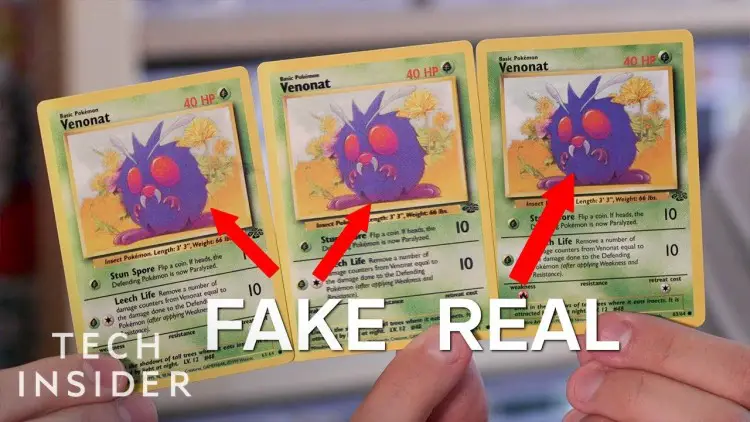
Pokémon cards are popular collector’s items that have been around for over two decades. With the rise of online marketplaces and the ease of access to counterfeit products, it’s become increasingly important for collectors to know how to differentiate between real and fake Pokémon cards.
So, How to Check if Your Pokémon Cards Are Fake? To check if Pokémon cards are fake you can examine the card’s thickness, color, texture, and font, as well as any holographic elements, for discrepancies from the authentic card design. Additionally, comparing the card to a known genuine card or seeking the opinion of a reputable collector or dealer can also help identify counterfeit cards.
In this article, we’ll go through the different aspects of Pokémon cards that can help you spot a fake and ensure that you’re buying authentic cards for your collection.
RELATED
What Is the Best Team in Pokémon Platinum And How to Build? (DETAILS EXPLAINED)
1. Check the Card’s Thickness
One of the most common giveaways of a fake Pokémon card is its thickness. Authentic Pokémon cards have a certain thickness to them that counterfeiters can’t always replicate.
If you have a legitimate Pokémon card to compare it to, place the two cards side by side and compare the thickness. If the card you’re examining is thinner or thicker than the real one, it’s likely a fake.
2. Look at the Card’s Edges
Another aspect to check is the card’s edges. Authentic Pokémon cards have smooth, rounded edges that are a result of the cutting process.
On the other hand, fake cards may have jagged or rough edges, as counterfeiters often use lower-quality materials or cut the cards improperly.
RELATED
Pokémon Legends: What Are ARCEUS’ BEST Starter Evolutions?
Run your fingers along the edges of the card to feel for any bumps or roughness. If the edges don’t feel smooth, the card is likely a fake.
3. Examine the Card’s Color
The colors on a Pokémon card can also be an indicator of whether it’s authentic or not. Counterfeiters may not be able to replicate the exact shades and hues of the original cards, so the colors on a fake card may look slightly different.
Look for any inconsistencies in the colors or any fading that may have occurred. You can also compare the colors on the card to a legitimate card or an image online to see if they match.
RELATED
Every BUNNY Pokémon (RANKED BY FANS)
4. Check the Card’s Font
The font used on a Pokémon card is a unique aspect that counterfeiters often overlook. The font on an authentic card will be consistent and clear, while a fake card may have inconsistencies or blurry lettering.
Look closely at the card’s text to see if the font matches that of a real card. You can also compare the text to a legitimate card or an image online to see if there are any noticeable differences.
5. Look for Holographic Details
Many Pokémon cards feature holographic details, which are shiny or reflective portions of the card. These details can be a dead giveaway of a fake card, as counterfeiters may not be able to replicate them accurately.
Check the holographic details on the card to see if they are bright and shiny. If the holographic portions look dull or don’t reflect light properly, it’s likely a fake.
RELATED
All BEAR Pokémon (RANKED BY FANS!!!)
6. Compare the Card to an Authentic Card or Image Online
One of the easiest ways to spot a fake Pokémon card is to compare it to an authentic card or an image online. Look for any differences in the card’s design, colors, font, and holographic details.
If you notice any inconsistencies, the card is likely a fake. Keep in mind that there are many different sets and versions of Pokémon cards, so make sure you’re comparing the card to the correct one.
RELATED
How Does a Pokémon Evolve?(DETAILS)
PRO TIP: If you have a card that you know is authentic, hold it side by side with the one you’re unsure of.
7. Buy From Reputable Sellers
The best way to ensure that you’re buying authentic Pokémon cards is to buy from reputable sellers. Look for sellers who have a track record of selling legitimate products and have good customer feedback.
Avoid buying from sellers who have negative reviews or who sell cards at suspiciously low prices. If you’re buying online, make sure the seller has a clear return policy in case the product turns out to be fake.
RELATED
How Do You Play Pokémon Go? (STEP BY STEP)
8. Check the Card’s Texture and Quality
The first thing you need to do when checking for the authenticity of a Pokémon card is to examine its texture and quality. Genuine Pokémon cards have a unique texture that’s difficult to replicate.
The cardstock used is smooth and slightly glossy. The edges of the cards should be crisp and not frayed.
Counterfeit Pokémon cards, on the other hand, often feel rough to the touch. The print quality is also usually low, resulting in blurry images and uneven coloring. The edges may also be uneven and jagged, giving away the card’s inauthenticity.
RELATED
What Is Pokémon Go?
9. Look for the Pokémon Card’s Symbol and Set Number
Every Pokémon card has a symbol that indicates its rarity level. If the symbol is missing or looks different from the ones on genuine Pokémon cards, then it’s likely a fake.
Additionally, every Pokémon card has a set number printed on it. The set number should match the corresponding set number for that card.
RELATED
What Is Legendary Pokémon?
10. Check for Misspellings and Grammatical Errors
Another way to identify fake Pokémon cards is by checking for misspellings and grammatical errors. While it’s rare to find such errors on genuine Pokémon cards, counterfeiters may make mistakes when printing the cards. Check the name of the Pokémon, the attack names, and any other text on the card for any errors.
11. Use a Magnifying Glass
If you’re still unsure about the authenticity of a Pokémon card, you can use a magnifying glass to examine it more closely.
RELATED
How to Play Pokémon on PC?
Genuine Pokémon cards have a high-quality print, and the lines are sharp and distinct. Counterfeit cards often have blurry lines and may show signs of pixelation when magnified.
In conclusion, owning genuine Pokémon cards is crucial for collectors. By following these tips, you’ll be able to identify fake Pokémon cards and ensure that your collection only includes authentic ones.
Remember to always purchase your cards from reputable sellers to reduce the risk of purchasing a counterfeit card.
My Personal Experience
There are several aspects to consider when trying to determine if a Pokémon card is authentic or fake. These include the card’s thickness, edges, color, font, holographic details, and comparing the card to an authentic one or an image online.
By examining these factors, you can increase your chances of spotting a fake card and avoid wasting money on a counterfeit product.
RELATED
The Most Powerful Pokémon Ranked
It’s important to note that while some fake Pokémon cards may be easy to spot, others can be more convincing.
Final Words
Counterfeiters are constantly finding ways to improve their products and make them harder to detect. Therefore, it’s crucial to stay vigilant and keep an eye out for any inconsistencies, even if they’re small.
If you’re uncertain about the authenticity of a Pokémon card, it’s best to consult with an expert or a collector with experience in identifying fakes. They can provide valuable insights and help you make an informed decision about whether to purchase the card.
In conclusion, being able to identify fake Pokémon cards is an essential skill for any collector.
By paying attention to the card’s thickness, edges, color, font, and holographic details, and comparing it to authentic cards or images online, you can avoid buying a counterfeit product and protect your investment.
Remember to always buy from reputable sellers and consult with experts when in doubt. Happy collecting!
